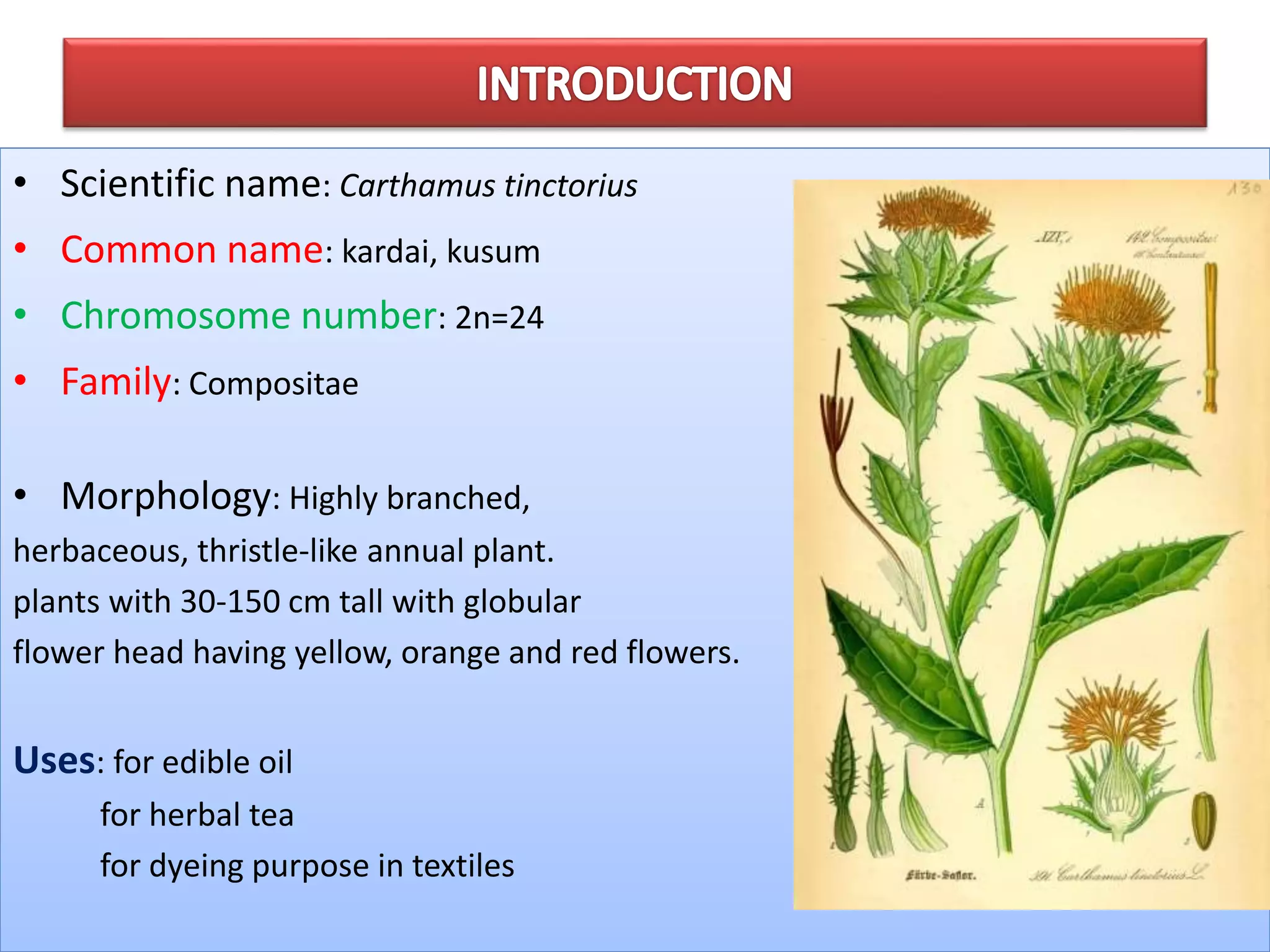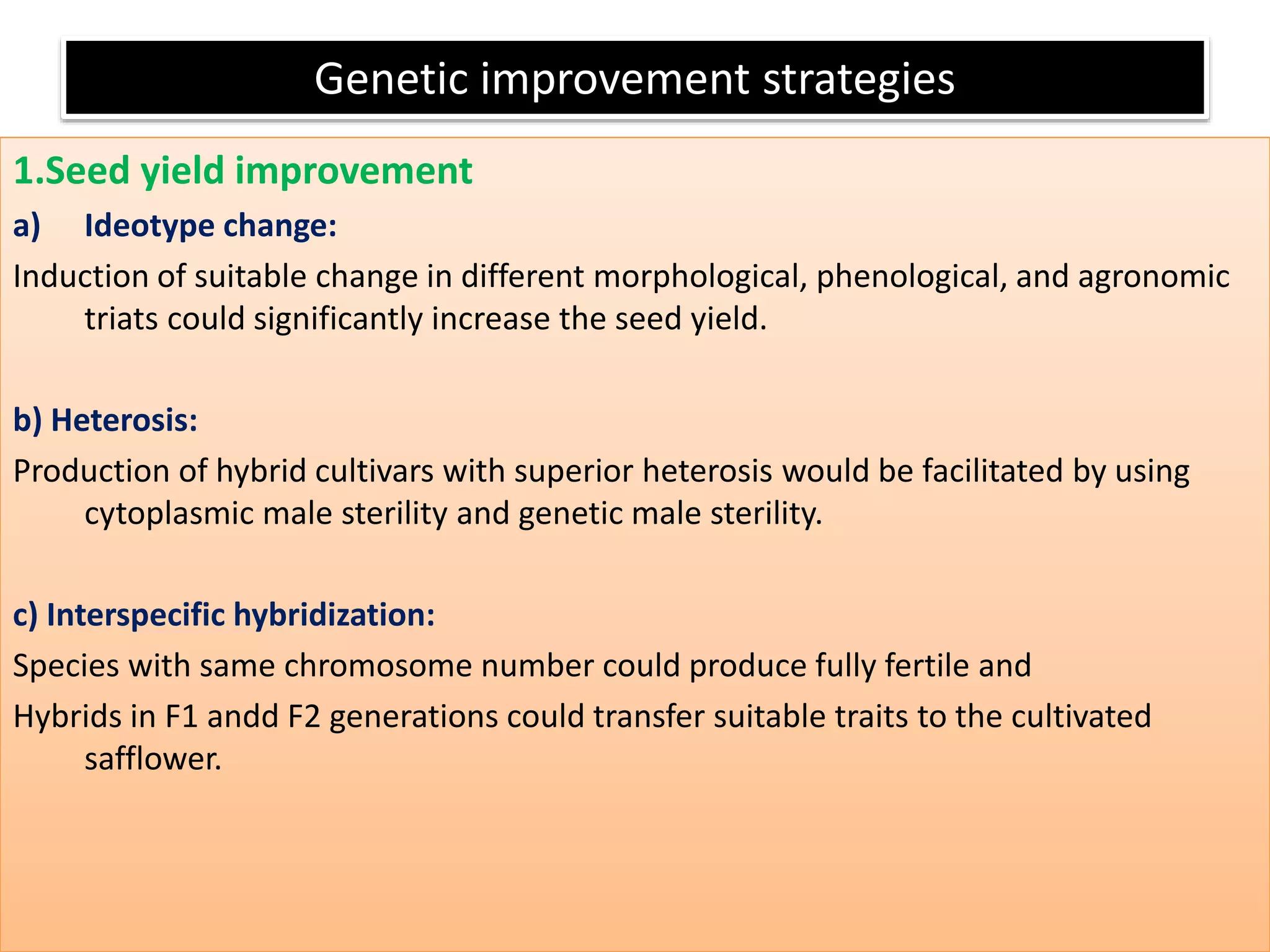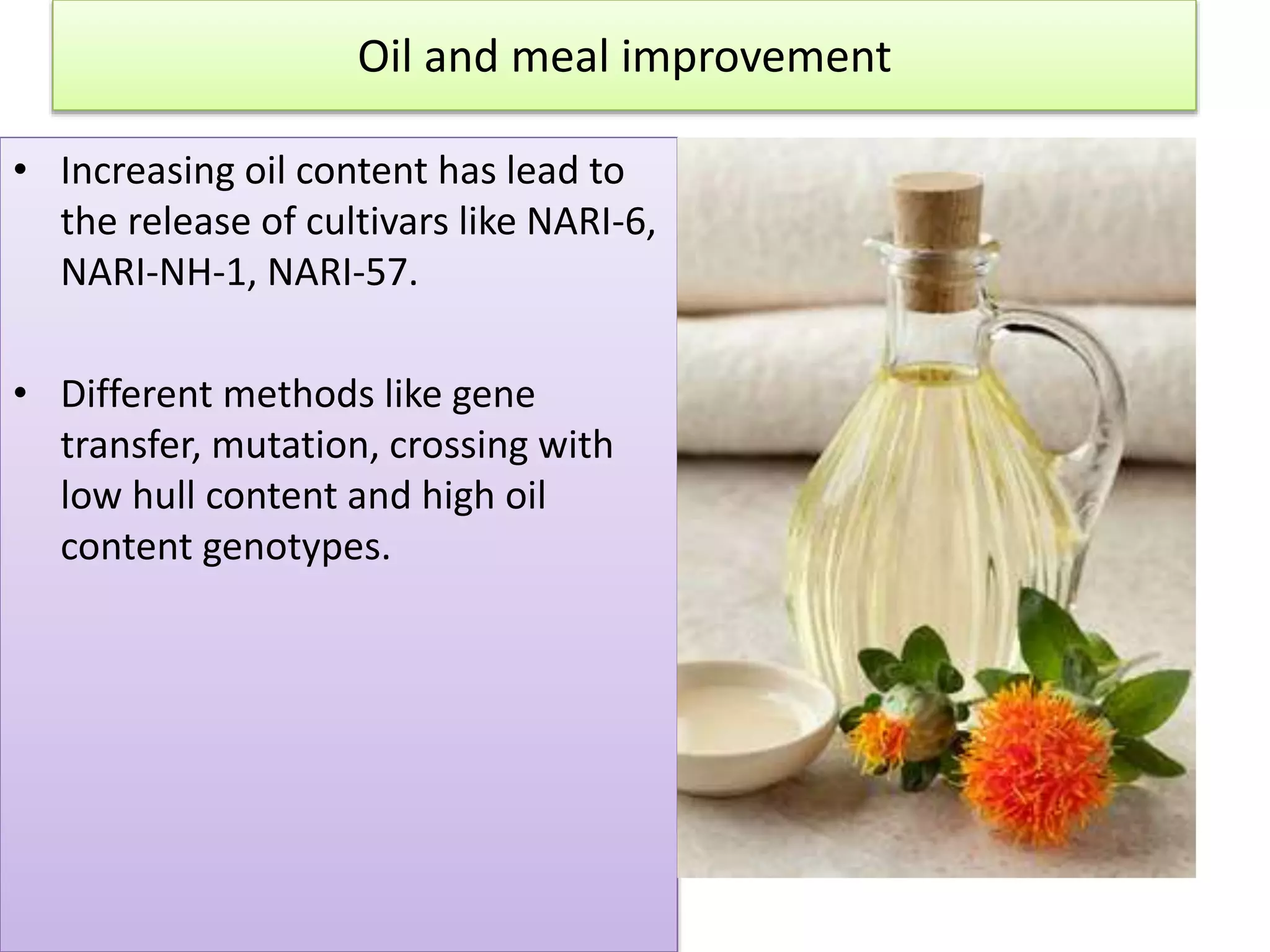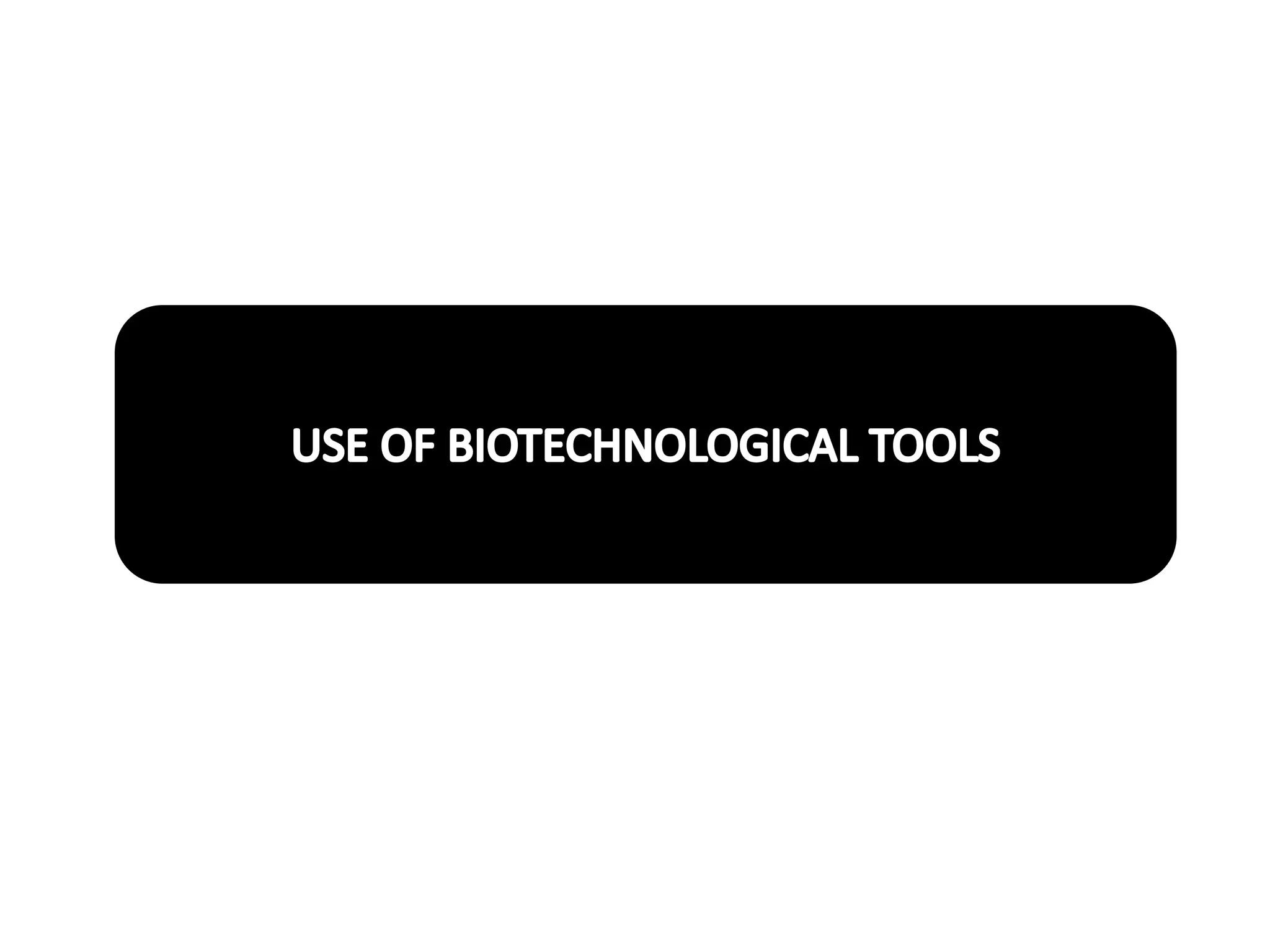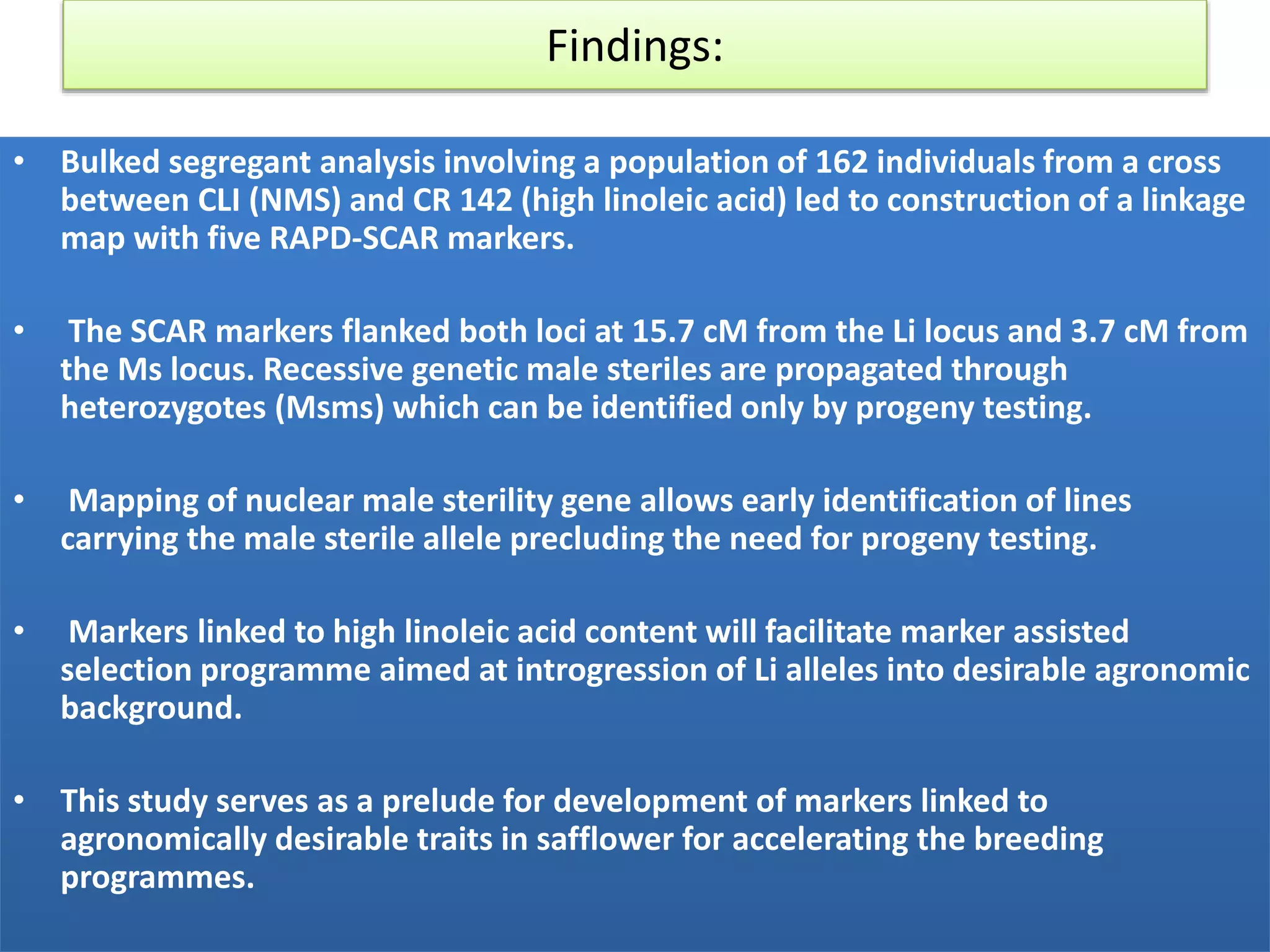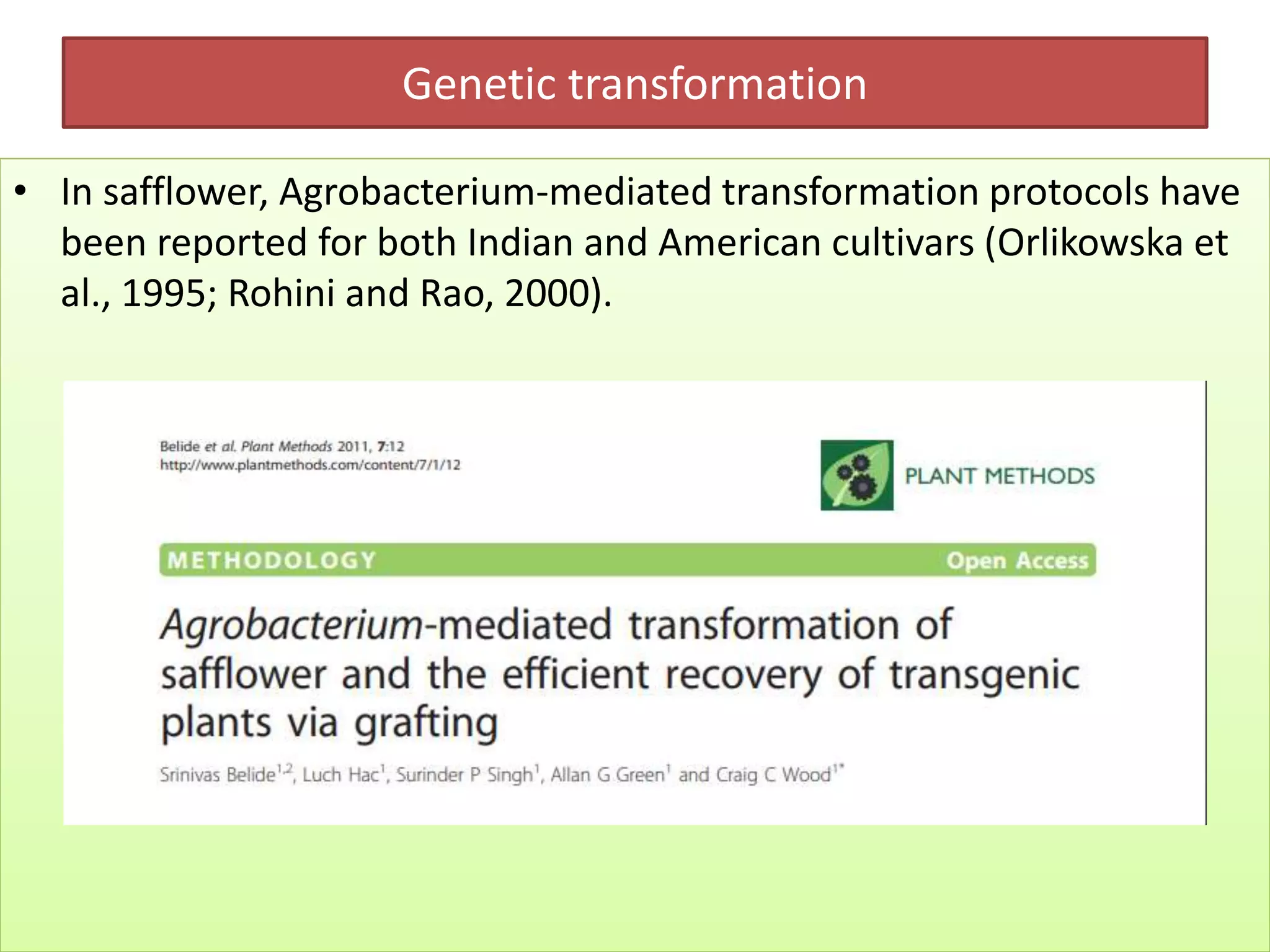1) Safflower is an annual herbaceous plant cultivated for edible oil, herbal tea, and textile dye. It faces challenges like low seed yield and lack of disease resistance.
2) Genetic improvement strategies include developing ideotypes for high seed yield through heterosis, interspecific hybridization, and increasing oil content. Marker-assisted breeding is being used to select for high oleic acid and disease resistance traits.
3) Studies have identified microRNAs related to high oleic acid content and developed disease-resistant plants using tissue culture selection. Genetic transformation protocols allow incorporation of useful genes.

